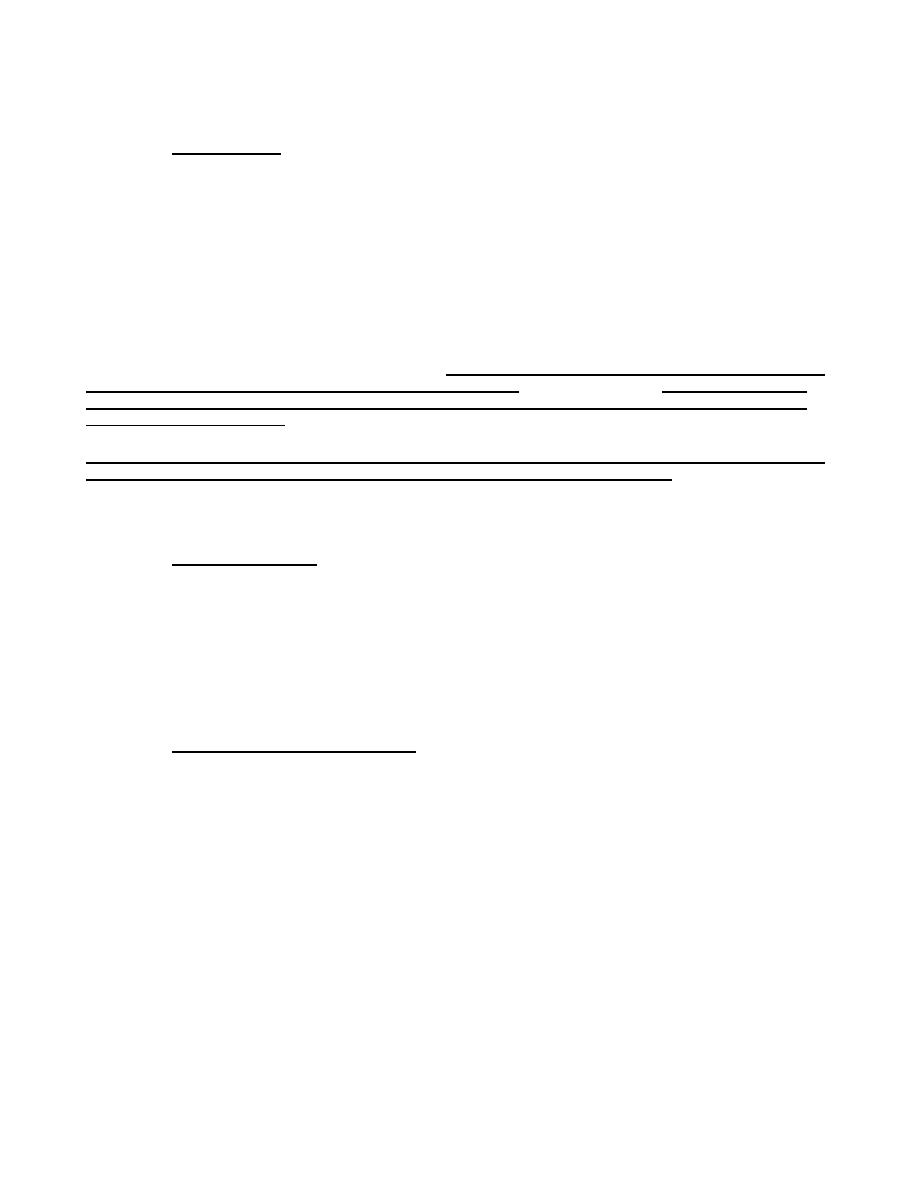
MIL-HDBK-1038
5.3.2
Open Gearing. Open gearing design and ratings are prescribed by AGMA
standards. Crane drives often use custom designed open gear sets as the last set
of the gear train with the lowest speed and highest torque. It is therefore
advisable to use only spur gears in this application to avoid the high axial loads
caused by helical gear teeth. Often these gear sets include an overhung
(cantilevered) pinion and are expected to operate with significant deflections
under full load. To tolerate these conditions, the support foundations must be
rigid and the gear pinion must be crowned. Neither the bending strength rating of
each gear and pinion nor the pitting resistance rating of the set may be less than
the rating of the drive motor. In exceptional cases, NCC may approve the use of a
gear set with a lesser pitting resistance rating in a slow/low cycle application.
Bending strength and pitting resistance of spur and helical gears are
calculated according to ANSI/AGMA 2001, Fundamental Rating Factors and Calculation
Methods for Involute Spur and Helical Gear Teeth, and AGMA 908, Geometry Factors
for Determining the Pitting Resistance and Bending Strength of Spur, Helical and
Herringbone Gear Teeth. Life and reliability factors (CL, KL, CR, and KR) are to
be taken as 1.0. The quality of gears is determined according to ANSI/AGMA 2000,
Gear Classification and Inspection Handbook Tolerances and Measuring Methods for
Unassembled Spur and Helical Gears (Including Metric Equivalents). All open
gearing on cranes should be Gear Quality Number Q8, or higher; except that rotate
bearing gears, because of their large diameters and slender cross sections, may be
Gear Quality Number Q6, or higher.
5.3.3
Shafts and Axles. These rotating mechanical elements are subject to
fatigue failure due to continuous bending reversals (once per revolution). Their
bearings, seals, couplings, and key seats. Each geometric discontinuity acts as a
stress raiser which increases the susceptibility to fatigue failure. A
comprehensive method for fatigue analysis of shafts and axles is presented in
ANSI/ASME B106.1M and must be followed for analysis of each custom designed shaft
and axle. Unless published endurance limit test data are available for the exact
shaft material (and its condition) the endurance limit is usually taken as half of
the ultimate strength.
5.3.3.1
Selection of Design Factors. If the given ultimate strength of the
material is the minimum value, then the reliability factor of 1.00 is used; if the
given ultimate strength is an average or representative value, then reliability
factor of 0.814 or 0.753 is used for reliabilities of 99.0 percent and 99.9
percent, respectively. The choice of the level of reliability depends on the
criticality of the drive and crane service. A reliability factor of 0.814 is
appropriate for most applications. Shafts and axles are not designed for a
particular number of cycles (life); therefore, the endurance limit (stress at
which a steel component is expected to have an infinite fatigue life) is used as
the reference. Furthermore, since the magnitude of future load/stress
applications cannot be predicted, every reversed bending cycle is assumed to
correspond to the rated torque. The assumptions introduce a significant degree of
conservatism into the fatigue analysis, which is reflected in the selection of the
design factors. NCC policy is to require a fatigue design factor of 1.5 for all
but the most critical cases. For particularly critical service, or when it is
established that the lifted load is nearly always the rated capacity of the crane,
a design factor of 2.0 should be used.
146


 Previous Page
Previous Page
